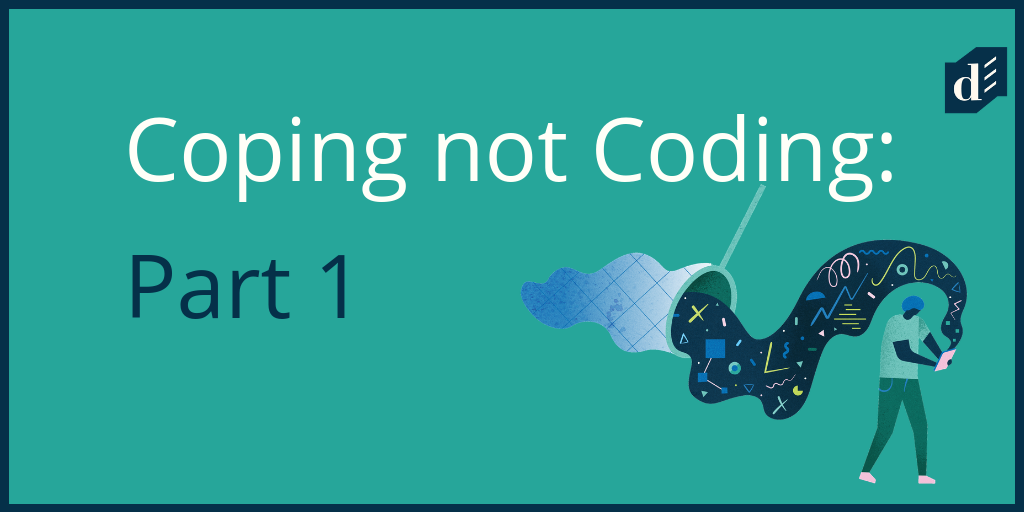New social infrastructure for an algorithmic world: Coping not Coding, Part 1
New social infrastructure for an algorithmic world


The Internet and data are making new demands on society and we’re increasingly being asked to adapt as individuals, not communities. How we shop, speak to our neighbours, find romance, and seek important and life-changing advice have all become decoupled from our sense of place. This is also incrementally changing the places we live in: Post Offices are closing while corner shops are turning into pick-up centres for online shopping. The social glue that held local communities together has become differently stuck.
As everyday life becomes more screen-based and automated, there’s an urgent need for new and different thinking about the support structures we need as individuals and the shared amenities that communities need to thrive and survive. Facebook, Amazon and Google provide increasingly large amounts of the daily infrastructure we need to live our lives, but have little accountability for the way their services are reshaping the physical world. And the social infrastructure that has traditionally been so important to our shared, communal quality of life — culture, health care, community space, places to play — is being moved ever-more online.
But where do we turn if Google doesn’t know the answer? How do we talk to our neighbours without Facebook? How do I buy food if all the local supermarkets have closed? How can I make a GP appointment if I’ve run out mobile data? And who can guide me through a crisis when I’ve nowhere left to turn?
Technology is changing our real-world interactions so quickly and subtly that it’s hard to notice until after it’s happened. Most people don’t need to learn to code, but we all need to work out how to cope with the ways data and algorithms are shaping our lives.
Our social infrastructure needs refreshing and reinvigorating for these data-driven times, so we can navigate the future collectively — not just on our own, while looking at our phones. In particular, there is a need for:
- Data to be legible to more people in society, so its effects are easier to see
- New public amenities to help more people navigate our screen-first world
This essay discusses, over three parts, how these can be achieved.
****
It’s tempting to think Internet-connected technologies don’t need real-world support and that everything that happens on a screen can stay there. But how we use technology has changed how we behave in the real world too. The good and bad consequences of technology can be seen in every town in Britain, and algorithmic personalisation is making it easier than ever for us to be individualised — alone, with our smartphones, waiting in for the next delivery.
Smartphone culture and the 2008 financial crash coincided to reshape our high streets: libraries, Post Offices, and pubs are closing or have closed; community noticeboards have turned into vibrant, useful communities on privately owned platforms like NextDoor, Facebook and WhatsApp; and Amazon Prime has changed the meaning of the word convenience.
Our research also found that there’s a widespread sense of powerlessness in our feelings about tech. That powerlessness is compounded by the way we interact with data:
- there is too much data to comprehend — the amount of data we move through and create every day is too large for most people to have any meaningful understanding of
- personalisation is individualising — the continued unbundling and targeting of leisure, retail and essential services is ever-more isolating; we are, in effect, alone with our data.
This heightened individualism has echoes of Californian car culture: our relationship with our smartphones is increasingly individualistic and is insulating us from the world around us. Or, as one of our research respondents put it, “If you painted a picture of the street everyone would be looking down at a phone — I find it weird and sad.”
The application of new technology is often labelled as “innovation” or “progress”, but letting a technology scale quickly without any way to mitigate its human consequences is quite the reverse. Has increased online shopping played a role in making “food deserts” in the UK? Is social media making us lonelier or is it a cure for loneliness? If no one is looking for wider social impact, no one will find it.
Alongside regulatory and legislative reform, there is a need for new social infrastructure that supports our access to data and connectivity. Civic planning, education and foresight all have a role to play in this — but there is also a need for more elemental sense-making, for design cues, language and intuition that help to help us describe and sense the systems we encounter and move through. It is difficult to question things we can’t see; data needs more visibility so it can be subject to deeper kinds of enquiry.
As we look into the uncertainty of increased automation, more of humanity deserves the tools to shape technology and its effects, rather than simply being expected to catch-up and respond. To do this, we need data and connectivity to be legible and imaginable, so that non-technologists — including civil society — can bring their expertise to shape technology and its effects more actively and not simply respond after the fact to the ways it is changing human experience.
